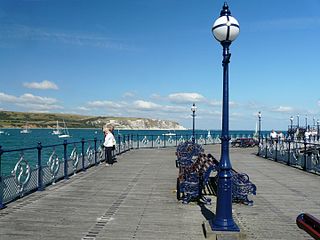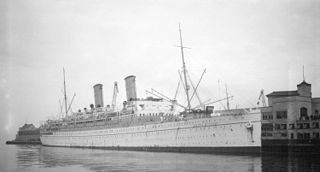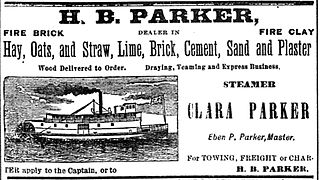
The Bristol Channel is a major inlet in the island of Great Britain, separating South Wales from Devon and Somerset in South West England. It extends from the lower estuary of the River Severn to the North Atlantic Ocean. It takes its name from the English city of Bristol, and is over 30 miles (50 km) wide at its western limit.

The River Heddon is a river in Devon, in the south of England. Running along the western edges of Exmoor, the river reaches the North Devon coast at Heddon's Mouth. The nearest road access to the beach is at Hunter's Inn, approximately 1.6-kilometre (1 mi) south of sea-fall. The named river flows for 8.8 kilometres (5.5 mi) and drains an area of 17.07 square kilometres (6.59 sq mi).
Heddon is a brand of artificial fishing lures created by James Heddon, who is credited with the invention of the first artificial fishing lures made of wood in the late 1890s.

Swanage Pier is a Victorian pier which extends into the southern end of Swanage Bay near the town of Swanage, in the south-east of Dorset. It was built in 1895 for passenger ship services. It is situated on the eastern coast of the Isle of Purbeck, approximately 6+1⁄4 miles (10.1 km) south of Poole and 25 miles (40 km) east of Dorchester in the United Kingdom.

USRC Seminole was a 188 ft (57 m), 845-ton United States Revenue Cutter Service steamer constructed by the Columbian Iron Works in Baltimore, Maryland for $141,000. She was commissioned in 1900 and saw service through 1934, when she was transferred to the Federal Emergency Relief Administration.

RMS Empress of France, formerly SS Alsatian was an ocean liner built in 1913-1914 by William Beardmore and Company at Glasgow in Scotland for Allan Line. In total, the ship's service history encompasses 99 trans-Atlantic voyages, 5 trans-Pacific voyages, and 8 other cruises in addition to her war service.

The Rt. Rev. Edmund Courtenay Pearce was the inaugural Bishop of Derby from 1927 until his death in 1935. His brother Ernest was the Bishop of Worcester from 1919 to 1930.

Frederic Wallis was an Anglican priest.

T.M. Richardson was a steamboat built in 1888 at Oneatta, Oregon, which served on Yaquina Bay and on the Yaquina River from 1888 to 1908. This vessel was commonly known as the Richardson or the T.M.

Rainbow was a sternwheel steamboat that was operated in the Coos Bay region of Oregon from 1912 to 1923. Rainbow is sometimes referred to as a "launch", meaning a small steamboat. This vessel's name is sometimes seen as Rain-Bow.

Antelope was a steamboat that was operated on the Coquille River and on Coos Bay on the southern Oregon coast from 1886 to about 1908. Antelope was a versatile boat, which served in various roles, including passenger transport, barge towing, and as a fisheries tender.

Dispatch was a sternwheel steamboat that was operated on the Coquille River on the southern Oregon coast from 1903 to 1920. The name of this vessel is sometimes seen spelled Despatch. This sternwheeler should not be confused with an earlier and somewhat smaller sternwheeler, also named Dispatch, that was built at Bandon, Oregon, in 1890, for which the 1903 Dispatch was a replacement.
W.H. Harrison was a steam schooner that operated from 1890 to 1905 on the coast of Oregon, the lower Columbia River, and southwest Washington state. At that time the salmon cannery industry was one of the major businesses of the coast. W.H. Harrison, while also carrying passengers and transporting general freight and lumber, was one of a number of steamers supplying materials to canneries along the coast, and transporting cases of canned salmon from the canneries.

Harvest Queen was the name of two stern-wheel steamboat built and operated in Oregon. Both vessels were well known in their day and had reputations for speed, power, and efficiency.The first Harvest Queen, widely considered one of the finest steamers of its day, was constructed at Celilo, Oregon, which was then separated from the other portions of the navigable Columbia River by two stretches of difficult to pass rapids.

Martinhoe is a small settlement and civil parish in North Devon district of Devon, England. Martinhoe is within the Exmoor National Park, the smallest National Park in England. In the 2011 census Martinhoe Parish was recorded as having a population of 159. Martinhoe is in the Combe Martin ward, for elections to the district council. Martinhoe's local government takes the form of a parish meeting and as such has no parish council nor elected parish councillors.

Clara Parker was a sternwheel-driven steamboat which was operated on the lower Columbia and lower Willamette rivers in the 1880s. The steamer ran for about ten years out of Astoria, Oregon in towing and jobbing work. In 1890 Clara Parker was rebuilt and renamed Astorian.














